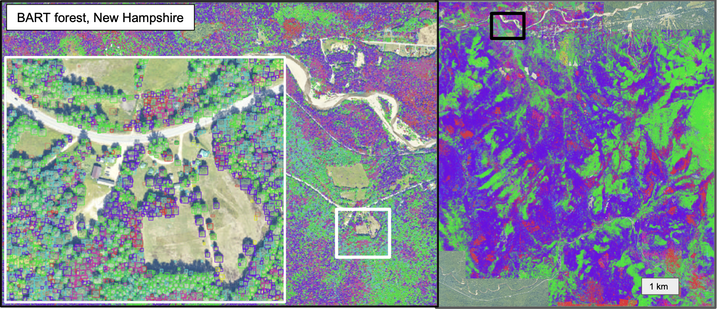Disentangling the roles of inter and intraspecific variation on leaf trait distributions across the eastern United States

Abstract
Functional traits are central to how organisms perform and influence ecosystem function. Although phylogenetic constraints and environmental conditions are both known to affect trait distributions, data limitations have resulted in large scale studies modeling traits either as species weighted averages (ignoring intraspecific variation) or as a function of the environment (ignoring phylogenetic constraints). As a result, large scale predictions for trait distributions do not include key drivers, likely resulting in biased predictions, and cannot be used to assess the relative contributions of inter- and intraspecific variation. To address these limitations, we developed a joint model integrating phylogenetic and environmental information to understand and predict the distribution of eight leaf traits across the eastern United States. This joint model explained 68% of trait variation, outperforming both species-only and environment-only models, with variance attributable to phylogeny alone (23%), the environment alone (18%), and their overlapping effects (26%). The importance of phylogenetic constraints and the environment varied by trait, with some traits associated predominantly with environmental variation and others with phylogeny. To make predictions more continuously across the eastern USA we combined this model with data from the large-scale Forest Inventory and Analysis survey to estimate traits for ~1.2 million trees. The combined model exhibited significant deviations in predictions from both species-only and environment-only models with variation in the direction and magnitude of these differences among ecoregions.
#Supplementary notes can be added here, including code and math.